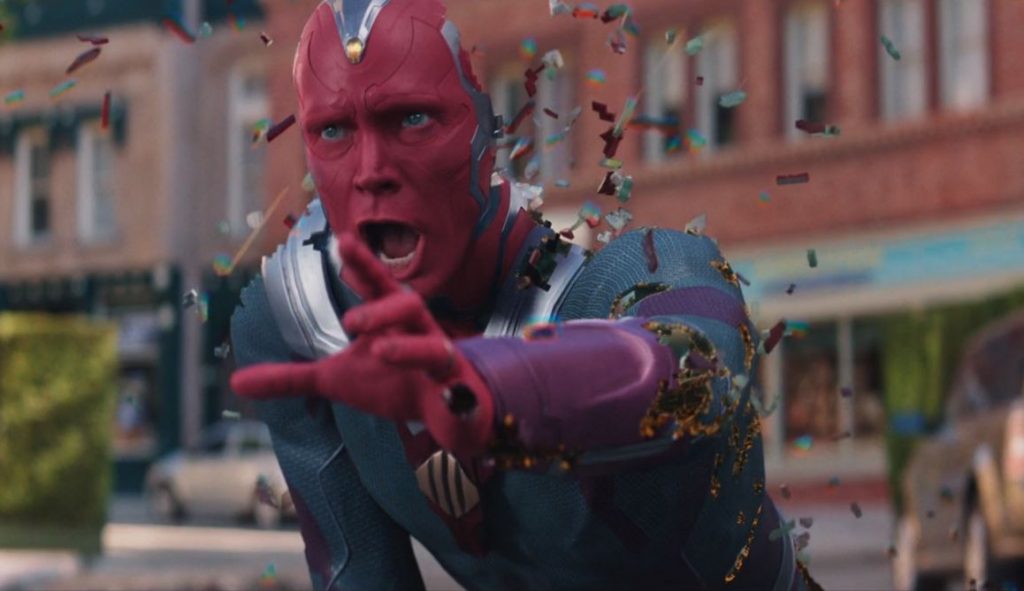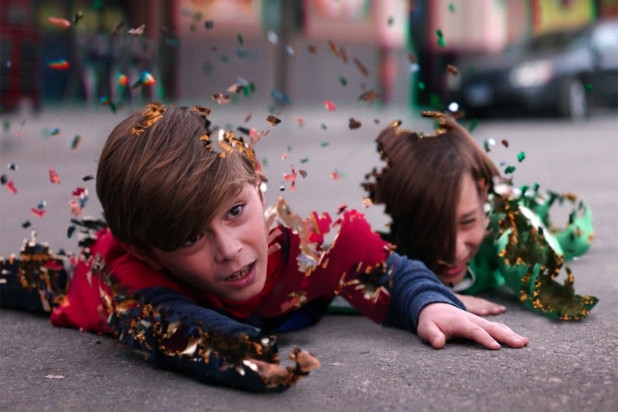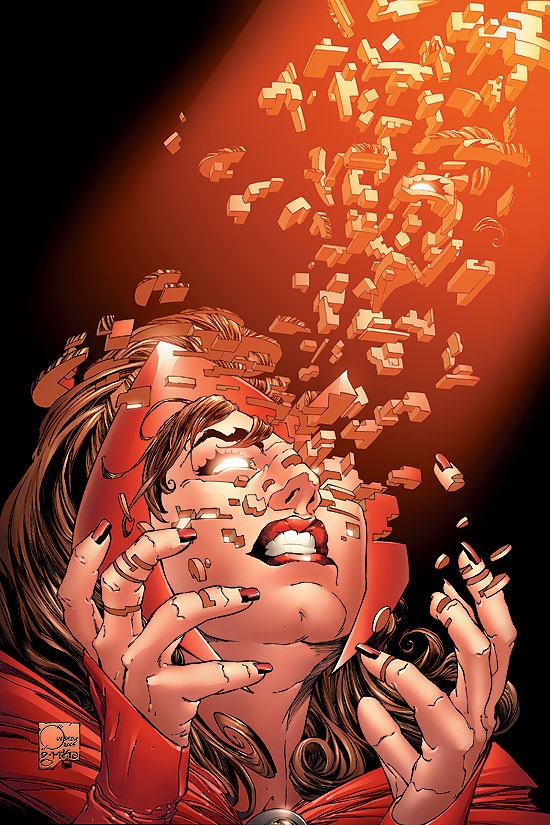Tetris Effect
An appreciation of WandaVision's appreciation of one of my favorite effects in the history of Marvel comics.
This piece is very, very somewhat about WandaVision, and very, very briefly talks about an event that takes place in the recent finale to this series. If you have yet to see WandaVision’s finale and would prefer to go in completely cold, consider this your spoiler warning.
“Tetris effect!”
I shouted that as my wife and I watched a recent episode of WandaVision, desperately pointing at the screen, Leo-style, in an effort to poorly clarify this confusing remark. My wife was puzzled about what I said, because in my excitement I may have unleashed the words as a fusillade that entered the world as one solid, unrecognizable sound. But when she saw what was happening on the screen, she realized what I said: Tetris effect.
Now, as much as I enjoyed Takashi Ishihara’s 2018 game that was equal parts majesty and pure stress, 6 this comment had nothing to do with the synesthesia-inspiring Playstation 4 release. Instead, I was referring to a specific treatment WandaVision was utilizing in depicting Wanda Maximoff’s powers, most specifically in the finale of the show.
As Wanda was taking down the Hex she built up around the town of Westview, New Jersey, her family – both the Westview-version of The Vision and her children Billy and Tommy – was disintegrating from existence, with block by Tetris-shaped block being removed from their persons. It was a big moment in the show, and like many beats from it and the rest of the Marvel Cinematic Universe, it came from the comics that spawned it. But this one was a little different.
-

From WandaVision Episode 9 -

From WandaVision Episode 9
While many aspects of these shows and films are derived from or inspired by the big storylines and enormous moments from Marvel’s 60 year history, they’re typically reinterpretations and reimaginings. Similar to what we read in the comics, of course, but they tend to look considerably different. This “Tetris Effect,” as I call it, 7 was a bird of a different feather. Unlike the majority of its peers, this was a direct visual takeaway from the comics, and it, to me, was cool as hell because of that.
Now, this isn’t the only time specific visuals from the comics have been leveraged. This has happened several times, arguably most famously in how Captain America: Civil War reused Steve McNiven’s vision of Cap fighting Iron Man from the cover of Civil War #7. But again, there’s a subtle difference between that and what transpired in WandaVision. That was a specific event taking place; this was how a character’s powers were visualized in total.
This “Tetris effect” has its roots in another Marvel event, House of M. That Brian Michael Bendis and Olivier Coipel book is a good one, and one that is unsurprisingly about Wanda creating an alternate version of the world at least in part because of her own grief, albeit in a considerably more holistic fashion. So it being a touchstone for WandaVision was unsurprising, even if it wasn’t just a ‘burb in New Jersey being remade in that event, it was all of existence.

As far as I can tell, this visual first was used on the cover of its first issue. Artist and then-Marvel editor-in-chief Joe Quesada took the B cover of the book and ran with it, showcasing how Wanda’s own existence was dissipating from the world in little Tetris-like blocks. I loved it from the start, especially considering it wasn’t how the character’s all over the place power set was usually depicted, even if this was meant to be more metaphorical than a literal view into her using her powers. When Wanda would use her powers in the past, we’d normally get assorted colored shapes and magic hands and then crazy things would happen. That was how she rolled, and had for decades.
subscribers only.
Learn more about what you get with a subscription
That might seem surprising to those who played the game, as it’s designed to bring a zen-like state to players. I don’t know why but it was often totally overwhelming for me instead!↩
Tetris effect” is what I’ve always called this visualization of The Scarlet Witch’s powers in my head so I just keep rolling with it.↩
Here’s an odd quirk: every usage of this visual that I could find came in the seventh issue of a series. Absolutely not meaningful, but pretty strange.↩
It is a tad less Tetris-y here, though.↩
Which, I should note, is maybe the most comic book-like aspect of them all!↩
That might seem surprising to those who played the game, as it’s designed to bring a zen-like state to players. I don’t know why but it was often totally overwhelming for me instead!↩
Tetris effect” is what I’ve always called this visualization of The Scarlet Witch’s powers in my head so I just keep rolling with it.↩
